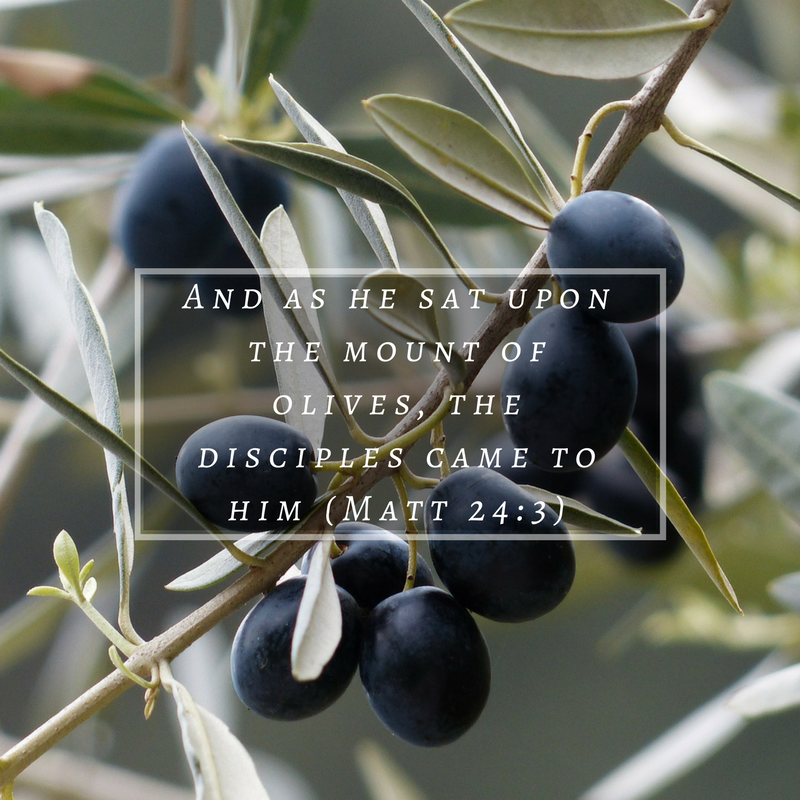
We have started construction of our prophetic model in the Scripture passage known as Jesus’s Olivet Discourse. This discourse is a dialog between the Lord and his disciples. It occurred (probably) on Tuesday of the week of Jesus’ crucifixion.
Jesus began this exchange with a prophecy regarding the Temple’s destruction. The disciples then asked two questions, one about when it would occur and the other about the sign(s) associated with it. The rest of the conversation contains Jesus’ answers to these two questions.
We have chosen to use Matthew’s account as the primary basis for our project for one major reason—its fullness. Mark and Luke also contain the Olivet Discourse, but Matthew provides more details. We have already examined an example of this—his division of the disciples’ sign question into two parts, one about the Lord’s parousia (or presence) and the other about the end of the (Mosaic) age (Matthew 24:3).1
Matthew helps us build our prophetic model in another delightful way—his literary structure emphasizes the unity found in the Olivet Discourse. To see this, we should remember a few things about the gospels’ composition.
The authors of what we know as the four gospels did not record events in precise chronological sequence. Neither did they quote Jesus or the apostles verbatim. The differences found in the four accounts show these facts. The sequence of the same events and the wording of equivalent sayings and dialogs differ in the four accounts.
These differences show the Holy Spirit directed the writers to edit their material before they gave them to the church. They do not affect the inspiration and authority of the gospels in the least. Rather, the writers arranged their materials to meet the needs of their intended audiences. A discussion of their methods and intentions is well beyond this blog post. Here, we want to emphasize that the church received the gospels as inspired (God-breathed) and infallible after this editing process was complete.
Matthew contains clear evidence of a special arrangement. “This Gospel has sometimes been described as a stately structure and the description is not inappropriate. It has more of careful design than any other of the Gospels. . . . It shows an author with an astonishingly orderly mind.”2
This “astonishingly orderly mind” organized the entire Olivet Discourse as a chiasmus.3 The Scriptures contain numerous examples of this structure.4 This is a literary device that presents parallel ideas or terms in a “sandwich” form that resembles a capital X. This is also the symbol for the Greek capital letter chi, hence the name chiasmus.
Many English readers are familiar with parallelism, a literary arrangement where thoughts occur in an AABBCCDD pattern. A chiasmus might express these thoughts in an ABCDDCBA order.5
Here is Matthew’s chiastic structure in the Olivet Discourse:
A. Exhortation: observe!—the Temple will be destroyed (Matt. 24:1–2).
B. When question: what will be the time? (Matt. 24:3a)
C. Sign question: what will be the sign? (Matt. 24:3b)
C.* Sign answer: the signs of associated events, symbols (Matt. 24:4–31)
B.* When answer: this is the time (Matt. 24:32–36)
A.* Exhortation: observe! (Matt. 24:37–25:46); watch! (Matt. 24:42, 43; 25:13)
The “sandwich” layers correspond to one another: A to A*, B to B*, and C to C*.
This chiastic design helps us follow the development of thought in the Olivet Discourse. It also gives a strong witness to the cohesiveness of Jesus’ subject from start to finish.
This intricate and delicate structure guards against introducing a new idea into the discussion. The insertion of observations about some other age or event into this arrangement would destroy Matthew’s intentional symmetry. He arranged his record of the Olivet Discourse to impress upon us the unity of Jesus’ subject throughout.
Matthew wrote his account several years after passion week. He had had time to reflect on the significance of Jesus’ prophecy and the disciples’ two important questions about it. He placed these in the first half of his chiasmus. Jesus’ answers to the disciples’ questions completed the reflexive half.
Matthew’s chiasmus—what we might call the X-factor in the Olivet Discourse—does more than show the cohesive nature of the discussion. It also provides a convenient outline for our analysis of this passage. We have already examined the A, B, and C layers (without thus naming them) in previous posts. We will deal with Jesus’ answer to the sign question (Matt. 24:4–31)—the C* in the chiasmus—in our next post (D.V.).
Footnotes
- The KJV has “thy coming” and “end of the world” respectively.
- Donald Guthrie, New Testament Introduction (Downers Grove, IL: Intervarsity Press, 1979), 29.
- I am indebted to my colleague Matt Carpenter for this observation.
- “Extended chiasm was a common literary technique in the ancient Near East.” William W. Klein, et al., Introduction to Biblical Interpretation (Dallas: Word, 1993), 299. Klein is using an alternate spelling of chiasmus.
- James B. Jordan, Through New Eyes: Developing a Biblical View of the World (Brentwood, TN: Wolgemuth & Hyatt, 1988), 55.
